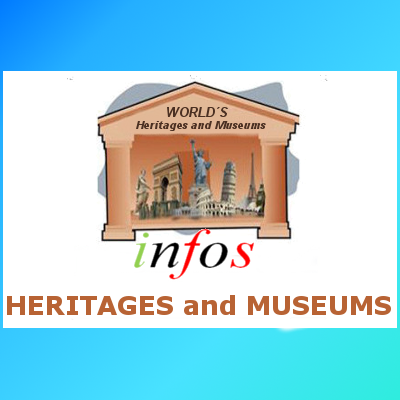What You Need To Know
Amman, the capital of Jordan, is a modern city with numerous ancient ruins. Atop Jabal al-Qala’a hill, the historic Citadel includes the pillars of the Roman Temple of Hercules and the 8th-century Umayyad Palace complex, known for its grand dome. Built into a different downtown hillside, the Roman Theater is a 6,000-capacity, 2nd-century stone amphitheater offering occasional events.
Amman is Jordan’s chief commercial, financial, and international trade centre. The royal palaces are to the east; the Parliament is in the western section. Chief industries include food and tobacco processing, cement production, and the manufacture of textiles, paper products, plastics, and aluminum utensils. Amman is Jordan’s chief transportation centre: two highways lead west toward Jerusalem, and one of the city’s main thoroughfares becomes the road to Al-Salṭ, to the northwest. Jordan’s main north-south highway, with its southern terminus at Al-ʿAqabah port, runs through the city. The modern, well-serviced Queen Alia International Airport is located near the tracks of the old Hejaz Railway, some 25 miles (40 km) south of the city. The University of Jordan (1962) and several museums and libraries, including the National Library, are located at Amman. Sites of interest include the remains of the ancient citadel, the adjoining archaeological museum, and a large, finely preserved Roman amphitheatre, which once seated 6,000. Pop. (2004 est.) 1,036,330; (2015) 3,895,991.
Area: 271.8 km²
Population: Estimate 2.705 million
Currency
-
The Jordanian Dinar is the official currency of Jordan, and is pegged to the United States Dollar at 0.709 JOD = 1 USD. After Israel took control of the West Bank in 1967, the Jordanian Dinar remained in circulation along with Israeli currency.
Economy
Although Jordan’s economy is relatively small and faces numerous obstacles, it is comparatively well diversified. Trade and finance combined account for nearly one-third of Jordan’s gross domestic product (GDP); transportation and communication, public utilities, and construction represent one-fifth of total GDP, and mining and manufacturing constitute nearly that proportion. Remittances from Jordanians working abroad are a major source of foreign exchange.
However, although Jordan’s economy is ostensibly based on private enterprise, services—particularly government spending—account for about one-fourth of GDP and employ roughly one-third of the workforce. In addition, Jordan has increasingly been plagued by recession, debt, and unemployment since the mid-1990s, and the small size of the Jordanian market, fluctuations in agricultural production, a lack of capital, and the presence of large numbers of refugees have made it necessary for Jordan to continue to seek foreign aid. The Jordanian government has been slow to implement privatization. Despite efforts by the International Monetary Fund (IMF) and the World Bank to boost the private sector—including agreements to write off the country’s external debt and loans from the World Bank designed to revitalize Jordan’s economy—it was only in 1999 that the government began introducing a number of economic reforms. These efforts included Jordan’s entry into the World Trade Organization (in 2000) and the partial privatization of some state-owned enterprises.
Perhaps most importantly, Jordan’s geographic location has made it and its economy highly vulnerable to political instability in the region. The Jordanian economy was resilient and growing before the Six-Day War of June 1967, and the West Bank, prior to its occupation by Israel during that conflict, contributed about one-third of Jordan’s total domestic income. Economic growth continued after 1967 at a slower pace but was revitalized by a series of state economic plans. Trade increased between Jordan and Iraq during the Iran-Iraq War (1980–88), because Iraq required access to Jordan’s port of Al-ʿAqabah. Jordan initially supported Iraqi president Saddam Hussein when Iraq occupied Kuwait during the Persian Gulf War, but it eventually agreed to the United Nations’ trade sanctions against Iraq, its principal trading partner, and thereby put its whole economy in jeopardy. External emergency aid helped Jordan weather the crisis, and the economy was boosted by the sudden influx of Palestinians from Kuwait in 1991, many of whom brought in capital. During 2003 the construction industry recovered with the arrival of many thousands of people fleeing Iraq, and Jordan became a major service centre for those working to reconstruct that country. Despite the support of the government for IMF and World Bank plans to increase the private sector, the state remains the dominant force in Jordan’s economy.
Manufacturing
Manufacturing is concentrated around Amman. The extraction of phosphate, petroleum refining, and cement production are the country’s major heavy industries. Food, clothing, and a variety of consumer goods also are produced.
Transportation and telecommunications
Jordan has a main, secondary, and rural road network, most of which is hard-surfaced. This roadway system, maintained by the Ministry of Public Works and Housing, not only links the major cities and towns but also connects the kingdom with neighbouring countries. One of the main traffic arteries is the Amman–Jarash–Al-Ramthā highway, which links Jordan with Syria. The route from Amman via Maʿān to the port of Al-ʿAqabah is the principal route to the sea. From Maʿān the Desert Highway passes through Al-Mudawwarah, linking Jordan with Saudi Arabia. The Amman-Jerusalem highway, passing through Nāʿūr, is a major tourist artery. The government-operated Hejaz-Jordan Railway extends from Darʿā in the north via Amman to Maʿān in the south. The Aqaba Railway Corporation operates a southern line that runs to the port of Al-ʿAqabah and connects to the Hejaz-Jordan Railway at Baṭn al-Ghūl. Rail connections also join Darʿā in the north with Damascus, Syria.
Justice
The judiciary is constitutionally independent, though judges are appointed and dismissed by royal irādah (“decree”) following a decision made by the Justices Council. There are three categories of courts. The first category consists of regular courts, including those of magistrates, courts of first instance, and courts of appeals and cassation in Amman, which hear appeals passed on from lower courts. The constitution also provides for the Diwān Khāṣṣ (Special Council), which interprets the laws and passes on their constitutionality. The second category consists of Sharīʿah (Islamic) courts and other religious courts for non-Muslims; these exercise jurisdiction over matters of personal status. The third category consists of special courts, such as land, government, property, municipal, tax, and customs courts.
Political process
Jordanians 18 years of age and older may vote. Political parties were banned before the elections in 1963, however. Between 1971 and 1976, when it was abolished, the Arab National Union (originally called the Jordanian National Union) was the only political organization allowed. Although not a political party, the transnational Muslim Brotherhood continued, with the tacit approval of the government, to engage in socially active functions, and it captured over one-fourth of the lower house in the 1989 election. In 1992 political parties were legalized—as long as they acknowledged the legitimacy of the monarchy. Since then, the brotherhood has maintained a significant minority presence in Jordanian politics through its political arm, the Islamic Action Front.
Security of Jordan
Although their political influence has now diminished, the Bedouin, traditionally a martial desert people, still form the core of Jordan’s army and occupy key positions in the military. Participation in the military is optional, and males can enter service at age 17. The Jordanian armed forces include an army and an air force equipped with sophisticated jet aircraft; it developed from the Arab Legion. There is also a small navy that acts as a coast guard. The king is commander in chief of the armed forces.
Health and welfare
The country’s infant mortality rate is lower than those of several other countries in the region. Most infectious diseases have been brought under control, and the number of physicians per capita has grown rapidly. Comprehensive health facilities are operated by the government, but hospitals are found only in major urban centres. A national health insurance program covers medical, dental, and eye care at a modest cost; service is provided free to the poor. Welfare services were private until the mid-1950s, when the government assumed responsibility. Besides supervising and coordinating social and charitable organizations, the ministry administers welfare programs.
Housing
The housing situation has remained critical despite continuing construction. Surveys conducted in Amman and the eastern Jordan Valley show that most households live in one-room dwellings. The Housing Corporation and the Jordan Valley Authority build units for low-income families, and urban renewal projects in Amman and Al-Zarqāʾ have provided new and renovated units. Housing outside of the cities and major towns remains austere, and a small number of Bedouin still live in their traditional black tents.
Education
The great majority of the population is literate, and more than half have completed secondary education or higher. Jordan has three types of schools—government schools, private schools, and the UNRWA schools that have been set up for Palestinian refugee children. Schooling consists of six years of elementary, three years of preparatory, and three years of secondary education. The Ministry of Education supervises all schools and establishes the curricula, teachers’ qualifications, and state examinations; it also distributes free books to students in government schools and enforces compulsory education to the age of 14. The majority of the students attend government schools. Jordan’s oldest institutions of higher learning include the University of Jordan (1962), Yarmūk University (1976), and Muʾtah University (1981). Many new universities were established in the 1990s. In addition to Khadduri Agricultural Training Institute, there are agricultural secondary schools as well as a number of vocational, labour, and social affairs institutes, a Sharīʿah legal seminary, and nursing, military, and teachers colleges.
Cultural life
Daily life and social customs
Jordan is an integral part of the Arab world and thus shares a cultural tradition common to the region. The family is of central importance to Jordanian life. Although their numbers have fallen as many have settled and adopted urban culture, the rural Bedouin population still follows a more traditional way of life, preserving customs passed down for generations. Village life revolves around the extended family, agriculture, and hospitality; modernity exists only in the form of a motorized vehicle for transportation. Urban-dwelling Jordanians, on the other hand, enjoy all aspects of modern, popular culture, from theatrical productions and musical concerts to operas and ballet performances. Most major towns have movie theatres that offer both Arab and foreign films. Younger Jordanians frequent Internet cafés in the capital, where espresso is served at computer terminals.
The country’s cuisine features dishes using beans, olive oil, yogurt, and garlic. Jordan’s two most popular dishes are musakhkhan, chicken cooked with sumac and onions and placed over clay-oven flatbread, and mansaf, lamb or mutton and rice with a yogurt sauce, which are both served on holidays and on special family occasions. Daily fare includes khubz (flatbread) with vegetable dips, grilled meats, and stews, served with sweet tea or coffee flavoured with cardamom.
Holidays that are celebrated in the kingdom include the Prophet Muhammad’s birthday (mawlid), the two ʿīds (festivals; Eid al-Fitr and Eid al-Adha), and other major Islamic festivals, along with secular events such as Independence Day and the birthday of the late King Hussein.
The arts of Jordan
Both private and governmental efforts have been made to foster the arts through various cultural centres, notably in Amman and Irbid, and through the establishment of art and cultural festivals throughout the country. Modernity has weakened the traditional Islamic injunction against the depiction of images of humans and animals; thus, in addition to traditional architecture, decorative design, and various handicrafts, it is possible to find non-utilitarian forms of both representational and abstract painting and sculpture. Elaborate calligraphy and geometric designs often enhance manuscripts and mosques. As in the rest of the region, the oral tradition is prominent in literary expression. Jordan’s most famous poet, Muṣṭafā Wahbah al-Ṭāl, ranks among the major Arab poets of the 20th century. After World War II a number of important poets and prose writers emerged, though few have achieved an international reputation.
Traditional visual arts survive in works of tapestry, embroidery, leather, pottery, and ceramics, and in the manufacture of wool and goat-hair rugs with varicoloured stripes; singing is also important, as is storytelling. Villagers have special songs for births, circumcisions, weddings, funerals, and harvesting. Several types of dabkah (group dances characterized by pounding feet on the floor to mark the rhythm) are danced on festive occasions, while the sahjah is a well-known Bedouin dance. The Circassian minority has a sword dance and several other Cossack dances. As part of its effort to preserve local performing arts, the government sponsors a national troupe that is regularly featured on state radio and television programs.
Jordan has a small film industry, and sites within the country, such as Petra and the Ramm valley, have served as locations for major foreign productions, such as director David Lean’s Lawrence of Arabia (1962) and Steven Spielberg’s Indiana Jones and the Last Crusade (1989).
Cultural institutions

Jordan has numerous museums, particularly in Amman. The capital is home to museums dedicated to coins, geology, stamps, Islam, Jordanian folklore, and the military. The Jordan National Gallery of Fine Arts houses a collection of contemporary Arab and Muslim paintings as well as sculptures and ceramics. The ancient ruins at Petra, Qaṣr ʿAmrah, and Umm al-Rasass near Mādāba have all been designated UNESCO World Heritage sites; there are also several archaeological museums located throughout the country.
Sports and recreation
The most popular team sports in Jordan are football (soccer) and basketball; handball and volleyball are also widely played. In individual sports, boxing, tae kwon do, and swimming are the most widespread. Jordan has fielded teams for the Pan-Arab Games (Jordan hosted the event in 1999), the West Asian Games, and the Islamic Games. The participation of Jordanian athletes in various international competitions, notably those held in the Middle East, has encouraged better relations in the region. The country first competed in the Summer Olympic Games in 1984; it has not participated in the Winter Games.
Media and publishing
Most newspapers, such as the English-language daily Jordan Times, are privately owned, but the government owns major shares in two of Jordan’s largest dailies, Al-Raʾy (“The Opinion”) and Al-Dustour (“The Constitution”). There are extensive press restrictions, and in 1998 a law was put into effect that further limited press freedoms. Since 2000, however, there has been an easing of some prohibitions. Jordan has several literary magazines as well as scientific and topical periodicals. Radio and television stations, which are government-owned, feature programs from both Arab and Western countries
e and October.










